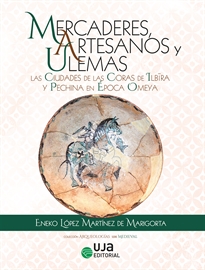
-
79,41
USD
-
* Free shipping to US.
-
-
Not available
Features:
- Pages: 432
- Format: 25x19 cm
- Edition Date: 2020
- Edition: 1
- Language: Castellano.
- Binding: Tapa Dura.
- Weight: 1,50 kg.
-
Mercaderes, artesanos y ulemas
Las ciudades de las Coras de Ilbira y Pechina en época Omeya
-
9788491592983
-
-
-
-
-
-
¿Por qué la sociedad rural y cristiana del reino visigodo se transformó en la urbana y arabomusulmana de al-Andalus? El libro responde a la pregunta sumergiéndose en el abanico de fuentes con datos al respecto: obras árabes y latinas, informes de excavación, Numismática y Epigrafía. Centra su análisis en las comarcas de Ilbīra y Pechina ―aproximadamente las provincias de Granada y Almería― del periodo omeya (siglos VIII-X), pues tiene dos ventajas: 1) El temprano florecimiento urbano de esa zona, observándose tendencias que más tarde se extendieron al conjunto de al-Andalus. Gracias a ello, somos testigos de la creación de ciudades como centros de poder omeya y primigenios focos de la islamización y la arabización, y 2) La zona se dividía en una región interior y otra litoral, lo cual permite comparar las dinámicas urbanas de ambas. La franja costera se conectó a una ruta transmediterránea que facilitó la circulación de productos y personas entre al-Andalus y el Oriente islámico, con el consiguiente estímulo al comercio y la especialización productiva. En definitiva, el libro explica las causas por las que descendientes de los soldados árabes conquistadores y de los campesinos indígenas conquistados se convirtieron en mercaderes, artesanos y ulemas residentes en pujantes ciudades. Why did the rural and Christian society of the Visigoth kingdom become the urban and Arab-Muslim society of al-Andalus? The present book answers this question by immersing itself in the range of sources available with information about it: Arab and Latin works, excavation reports, Numismatics and Epigraphy. The author focuses his analysis on the regions of Ilbīra and Pechina - approximately the provinces of Granada and Almería - of the Umayyad period (8th-10th centuries), as it has two advantages: 1) The early urban blossoming of that area, observing trends that later will extend to al-Andalus as a whole. Thanks to this fact, we are witness to the creation of cities as centers of the Umayyad power and primitive focal points of Islamization and Arabization, and 2) The area was divided into an internal region and a coastal region, which allows the author to compare the urban dynamics of both. The coastal area was connected to a trans-Mediterranean route that facilitated the movement of products and people between al-Andalus and the Islamic East, with the consequent incentive of trade and productive specialization. Ultimately, the book explains the reasons for the transformation of the conquering Arab soldiers and the conquered indigenous peasants into merchants, craftmen and ulemas that stayed as residents in thriving cities.
-
79,41
USD
-
* Free shipping to US.
-
-
Not available
The book belongs to the following catalogs
Other books in the subject Arqueología:
-
12,84
USD
-
12,84
USD
-
12,85
USD
-
13,64
USD
-
20,82
USD
-
20,80
USD